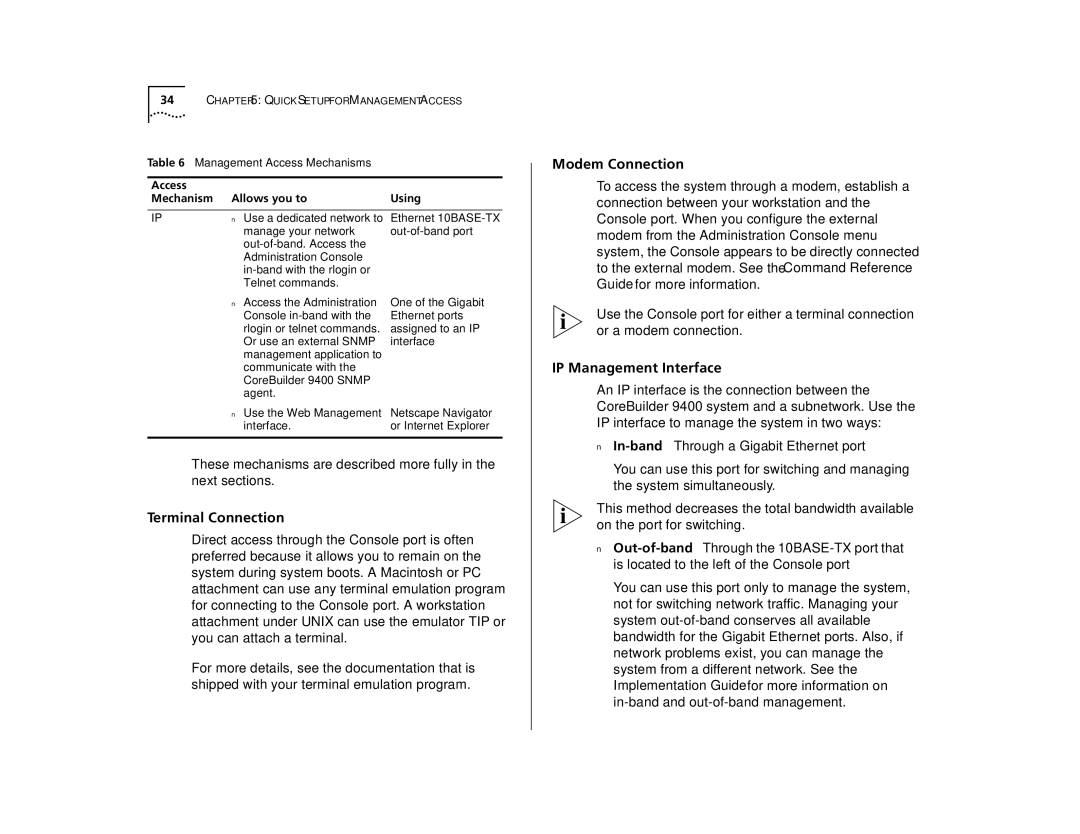
34CHAPTER 5: QUICK SETUP FOR MANAGEMENT ACCESS
Table 6 Management Access Mechanisms
Access | Allows you to | Using | |
Mechanism | |||
|
|
|
|
IP | ■ | Use a dedicated network to | Ethernet |
|
| manage your network | |
|
|
| |
|
| Administration Console |
|
|
|
| |
|
| Telnet commands. |
|
| ■ | Access the Administration | One of the Gigabit |
|
| Console | Ethernet ports |
|
| rlogin or telnet commands. | assigned to an IP |
|
| Or use an external SNMP | interface |
|
| management application to |
|
|
| communicate with the |
|
|
| CoreBuilder 9400 SNMP |
|
|
| agent. |
|
| ■ | Use the Web Management | Netscape Navigator |
|
| interface. | or Internet Explorer |
|
|
|
|
These mechanisms are described more fully in the next sections.
Terminal Connection
Direct access through the Console port is often preferred because it allows you to remain on the system during system boots. A Macintosh or PC attachment can use any terminal emulation program for connecting to the Console port. A workstation attachment under UNIX can use the emulator TIP or you can attach a terminal.
For more details, see the documentation that is shipped with your terminal emulation program.
Modem Connection
To access the system through a modem, establish a connection between your workstation and the Console port. When you configure the external modem from the Administration Console menu system, the Console appears to be directly connected to the external modem. See the Command Reference Guide for more information.
Use the Console port for either a terminal connection or a modem connection.
IP Management Interface
An IP interface is the connection between the CoreBuilder 9400 system and a subnetwork. Use the IP interface to manage the system in two ways:
■
You can use this port for switching and managing the system simultaneously.
This method decreases the total bandwidth available on the port for switching.
■
You can use this port only to manage the system, not for switching network traffic. Managing your system
